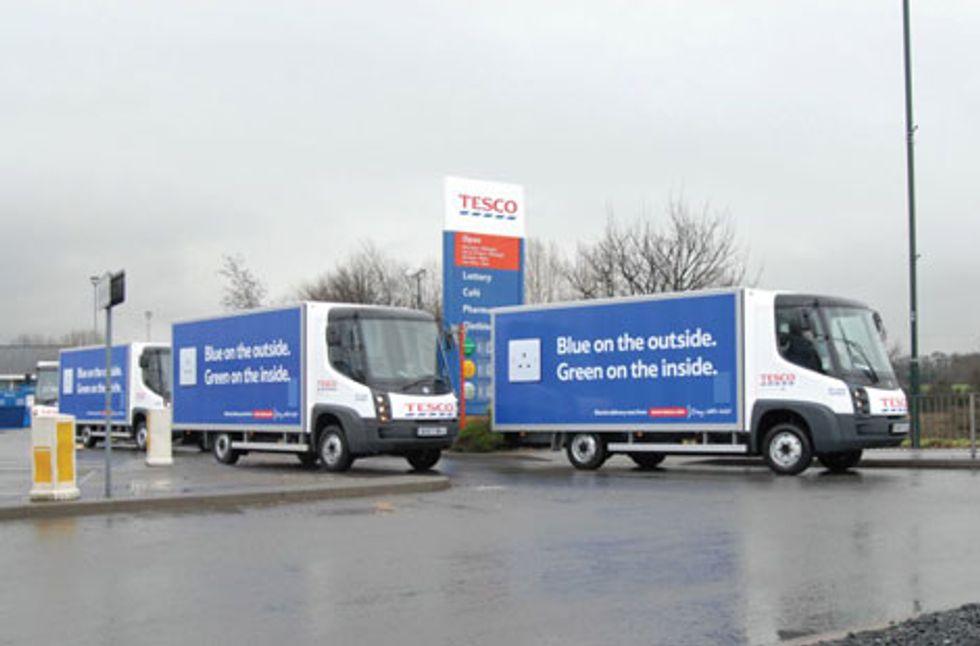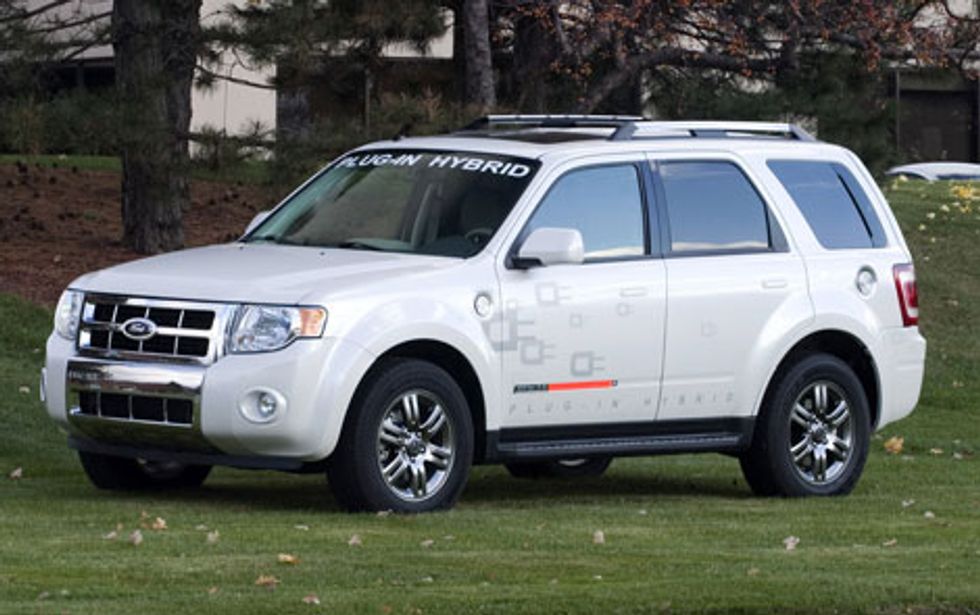”The hype is in hyperdrive.”
It was the best quote of a two-day conference held last month in Troy, Mich., called ”Developing the Market and Infrastructure for Electric and Plug-In Hybrid Vehicles,” and it came toward the end, from Ed Kjaer of Southern California Edison. He noted the ever-expanding promises of not just more hybrid vehicles but also plug-in hybrids, fully electric vehicles, and then the truly futuristic stuff: using vehicles with large-capacity batteries as adjuncts to the power grid for ancillary services, like load balancing (known as vehicle-to-grid, or V2G for short), and the extension of that concept to ”cash-back hybrids” that would (in theory) make money for their owners in that capacity.
Today there are roughly 2 million hybrids in the global car park of 820 million vehicles--or far less than 1 percent. And there are fewer than 200 plug-in hybrids. Before we start thinking about other uses for the battery packs in such vehicles, Kjaer all but begged his audience, ”let's just get the batteries driving the wheels first!”
This only underscores the challenges of integrating a new and different form of energy storage and motive power into a global ecosystem of vehicles that for a century have used only petroleum. And with the prospect of tens of thousands of plug-in hybrids arriving in California within three years, automakers and electric utilities recognize that they have to talk to each other. But it hasn't been entirely smooth, as Ford's Nancy Gioia related during a presentation on a handful of Ford Escape Hybrids that the company had converted to plug-ins. Both sides will learn that it takes weeks, she said, just to understand how each other's businesses actually work, let alone settle on shared definitions for common terms.
From the perspective of Ford, buffeted by oil prices and fast-changing market forces--and with a loan of more than US $18 billion obtained by pledging essentially all the company's assets--the relative predictability of the electric utility industry must look attractive. As Gioia put it, ”I'd love to work for a company that's guaranteed a profit every year!” On the other hand, she noted, the same industry's fragmentation seems utterly daunting. ”There are thousands of utilities in North America,” Gioia said, adding firmly, ”and there's no way automakers will ever talk to more than a small number of them.”
Meanwhile, presentations by two British companies planning to set up assembly plants for electric medium-duty trucks captured quite a lot of interest. It turns out that urban delivery trucks offer very good ”duty cycles” for electrification. They cover a fairly predictable area--usually about 160 kilometers (100 miles) or less each day--and they return to the same base every night, meaning that the costs of high-voltage charging stations can be concentrated into a central location.
Britons of a certain age still remember the three-wheeled electric milk floats that delivered their morning pints throughout London. The company that made them, Smith Electric Vehicles, still survives today, and it's preparing to launch mid- and large-size electric delivery trucks into the U.S. market. Smith will be closely followed by a new company, Modec Ltd. While Smith now modifies Ford trucks, Modec has designed its own from the ground up. Each company plans to set up a U.S. assembly plant to avoid the notorious ”chicken tax,” an import duty of 25 percent that has been levied for 45 years on light- and medium-duty commercial vehicles imported into the United States. (The notorious tax stems from a trade dispute over U.S. exports of frozen chickens, then a brand-new concept, to Europe.)
Already both private fleets and utilities have committed to major orders of electric trucks. But in pilot tests, the truck makers have learned some hard lessons, warned Modec's William Doelle. Among the recommendations he offered:
� Plan for much longer and much costlier infrastructure installations than you could possibly imagine;
� Do not let fleet mechanics work on any of the high-voltage components;
� Do not expect fleet mechanics to have any understanding of safe electrical practices;
� Similarly, do not trust the fleet's in-house electricians! Modec was forced to replace a $6000 high-voltage charger, which had to be air-freighted from the UK, when a man he called ”Sparky” hung it on an outdoor chain-link fence, exposed to the elements, without considering that tropical rainstorms might pose a problem to a 300-volt indoor device;
� It is crucial to create very clear, explicit, well-illustrated manuals that cover every possible contingency.
In the conference's penultimate presentation, SCE's Kjaer asked the audience to consider that perhaps the biggest impact of large lithium-ion battery packs might actually be on the world's utilities. ”Energy storage is the game changer,” he said, and available lithium-ion battery packs of 10 kilowatts or more could lead to what he called ”Electric Utilities 2.0.”
This mass production of large-format li-ion cells and packs for vehicles will allow local energy storage as well, he suggested, both for homeowners and at power generation facilities. After all, aside from dams--effectively huge energy storage devices--the power that utilities produce must be consumed within fractions of a second because there are few cost-effective ways to store it. But battery packs may change the industry, the grid, and the footprint of our power use.
Imagine a home energy storage and management system with a 1.5-kW photovoltaic array plus a 10-kilowatt-hour battery pack. Right now, 3 kW of PVs costs about $27 000. If you cut that in half and add a $5000 battery, a home can create and store power from the sun and the power company. With smart meters and demand-variable power pricing, for less than $20 000 a home could take itself off the grid whenever power gets too pricey--or at the utility's request during emergencies--and maybe even feed power to the grid, which is known as reverse metering. At larger scales, the same principle applies to 1- to 2-megawatt energy storage substations at wind farms, which produce their maximum power after dark, when it's least needed. Indeed, orders from utilities for large-format li-ion packs could hasten the ramp-up of full-scale manufacturing, lowering costs faster than carmakers' demand alone. Each plant now costs hundreds of millions, so the capital investment won't come until the demand is there--and with their long amortization horizons, utilities can play a major role at the earliest stages.
About the Author
John Voelcker has written about automotive technology and other topics for 20 years. He covered software and microprocessor design for IEEE Spectrum from 1985 to 1990.

